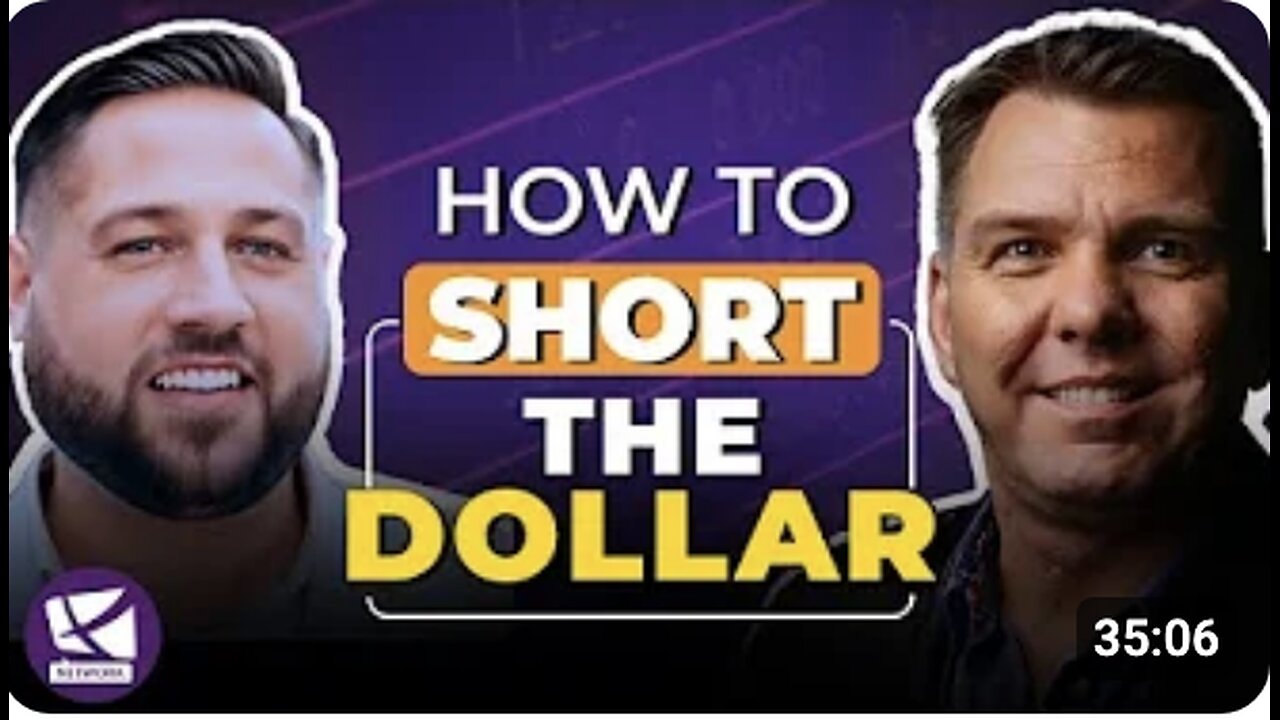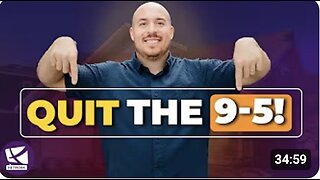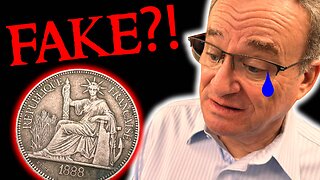Premium Only Content

How to Profit from a Weakening Dollar
In this episode of Rich Dad's Stockcast, host Del Denney teams up with financial expert Andy Tanner to tackle a fascinating topic: how to short the U.S. dollar. With growing concerns about the future value of the dollar, this episode provides a clear and actionable guide on how to profit from a weakening currency, making it essential viewing for anyone looking to sharpen their financial skills.
FREE Training with Andy Tanner: https://bit.ly/3JsRdmj
What Does It Mean to Short the Dollar?
For those unfamiliar with the concept, shorting the dollar means taking a financial position that profits if the value of the dollar declines. Andy Tanner simplifies this strategy into a practical, four-step process that anyone—from beginners to seasoned investors—can follow.
The Four Steps to Shorting the Dollar:
1. Borrowing: The first step involves borrowing an asset expected to lose value, like the U.S. dollar.
2. Exchanging: Trade the borrowed dollars for an asset that is likely to hold or increase its value, such as real estate.
3. Converting Back: Generate income from the asset (like rental income from property) and convert it into cash flow.
4. Returning: Pay back the borrowed dollars with currency that has decreased in value, maximizing your profit.
Real-World Application in Real Estate
A real-world example of shorting the dollar is through real estate investing. By borrowing money to purchase rental properties, you're effectively betting against the dollar. As inflation rises and the dollar weakens, the relative cost of your debt decreases while property values and rental income typically increase. This creates a powerful wealth-building opportunity.
Andy Tanner’s Insight:
“You can either buy assets that go up in value or borrow liabilities that go down in value. Either way, your net worth grows.”
Risk Management
While shorting the dollar can be lucrative, it’s not without risks. Andy and Del emphasize the importance of managing your risks through financial education, balancing assets, liabilities, and cash flow to ensure long-term success.
-----
Disclaimer: The information provided in this video is for educational and informational purposes only. It should not be considered as financial advice or a recommendation to buy or sell any financial instrument or engage in any financial activity.
The content presented here is based on the speaker's personal opinions and research, which may not always be accurate or up-to-date. Financial markets and investments carry inherent risks, and individuals should conduct their own research and seek professional advice before making any financial decisions.
-
 34:59
34:59
The Rich Dad Channel
5 days agoHow Short-Term Rentals Build Wealth Fast - Jaren Sustar, Connor Cushman
2.1K2 -
 2:27:04
2:27:04
AirCondaTv Gaming
2 hours ago $2.69 earnedWar Thunder - Tankering Around for That 10 Bomb
15.5K3 -
 4:19:05
4:19:05
SpartakusLIVE
5 hours agoThe MACHINE locks in for 12-hour POWER stream
12.1K1 -
 1:58:40
1:58:40
Robert Gouveia
4 hours agoJ6 Coverup: Prosecute LIZ CHENEY; NY Judge REJECTS Immunity; Trump Breaks Gag?
50.7K19 -
 2:22:06
2:22:06
WeAreChange
3 hours agoPSYOP Spreads: Drones Shut Down Airport In New York!
39.5K13 -
 1:31:18
1:31:18
Redacted News
5 hours agoEMERGENCY! NATO AND CIA ASSASSINATE TOP RUSSIAN GENERAL, PUTIN VOWS IMMEDIATE RETALIATION | Redacted
183K233 -
 56:45
56:45
VSiNLive
4 hours ago $4.64 earnedFollow the Money with Mitch Moss & Pauly Howard | Hour 1
51.6K2 -
 52:44
52:44
Candace Show Podcast
4 hours agoMy Conversation with Only Fans Model Lilly Phillips | Candace Ep 122
63K234 -
 UPCOMING
UPCOMING
tacetmort3m
5 hours ago🔴 LIVE - RELIC HUNTING CONTINUES - INDIANA JONES AND THE GREAT CIRCLE - PART 5
30.2K -
 26:52
26:52
Silver Dragons
3 hours agoCoin Appraisal GONE WRONG - Can I Finally Fool the Coin Experts?
23.5K2